Obasanjo And Tinubu’s Tańtólóhun Dogs
In 𝘛𝘩𝘦 𝘏𝘶𝘯𝘵𝘦𝘳 𝘛𝘩𝘪𝘯𝘬𝘴 𝘛𝘩𝘦 𝘔𝘰𝘯𝘬𝘦𝘺 𝘐𝘴 𝘕𝘰𝘵 𝘞𝘪𝘴𝘦 – 𝘛𝘩𝘦 𝘔𝘰𝘯𝘬𝘦𝘺 𝘐𝘴 𝘞𝘪𝘴𝘦, 𝘉𝘶𝘵 𝘏𝘦 𝘏𝘢𝘴 𝘏𝘪𝘴 𝘖𝘸𝘯 𝘓𝘰𝘨𝘪𝘤:
Essays by Ulli Beier, edited by Wole Ogundele, (2001) Horst Ulrich Beier, famously known as Ulli Beier, had an engaging narrative about the power and powerlessness of dogs. He entitled the narrative, Dog Magic of Yoruba Hunters. In it, Beier related how his dog, which he provocatively named Tańtólóhun, (who can compare with God?)’s weird tantrums, which occurred in Osogbo in the early 1960s, could mirror the insufferable power and limitations of dogs. The motive of telling the story, he said, was to “demonstrate the extraordinary power of hunters over dogs”.
Otherwise very gentle dog, whenever Tańtólóhun saw a particular elderly priest of Oya goddess guest of the Beiers, she suddenly went abrasive. The priest, said the German-Jew literary octopus, had just lost his following and as such, little or no worship activity went on in his shrine. Whenever the priest branched at the Beiers’ home on a visit, Tańtólóhun suddenly went haywire, grew inexplicably aggressive towards the priest, growling and barking. The old priest, too couldn’t explain the oddity. He threatened not to visit the Beiers again unless the weird and wild Tańtólóhun was curtailed. The Beiers’ friends’ explanation for Tańtólóhun’s tantrums was that, “the priest liked to eat dog meat, and because of this, often performed the annual sacrifice for a group of Ogun worshippers in Osogbo… the dog sensed his perverse attitude to dogs and her uncontrollable anger stemmed from that”.
Tańtólóhun’s hatred for the Oya priest intensified. “One day, she even started to tug at his long flowing agbádá with her teeth. Infuriated, the priest shouted that if the dog did it again, he would have to ‘put medicine’ on her. The very next day, the dog rushed out again and this time, the priest turned round, speaking incantations at her.” The second day, as the Oya priest was passing by, Tańtólóhun repeated the same weird bellicosity. “She rushed out again barking and tried to grab the priest’s agbádá. Angrily, the priest turned and spoke his incantations. The dog fled back into the house. But this time, she did not recover. Instead she behaved in the most frightening manner. She rolled her eyes, snarled at everybody and foam appeared in her mouth. We could not be sure that she had not developed rabies. Even if it weren’t so, it was obvious that in her present mood, she would sooner or later attack people. She did not appear to recognise any of us. We quickly evacuated all the people from the house. There were usually a dozen children playing on the ground floor. Then we locked her into the house,” lamented Beier.
Another friend of the Beiers’, the head of hunters in Osogbo, the Olúóde, upon being told of Tańtólóhun’s fate, offered to help. He was promptly ushered into the solitary prison where Tańtólóhun was locked, lest no human be the victim of her madness. Ten minutes after, the Olúóde came out laughing. “The dog followed him, wagging her tail as if nothing had happened. Tańtólóhun had no recurrence of her strange behaviour (again)… The Olúóde said he did not give the dog anything to eat, that all he used was incantations.”
Advertisement
Beier, the man who told that story, was born July 30, 1922, and exited this plane on April 3, 2011. Beier gave Nigerian literature teeth to bite in the twilight of and immediate post-colony (1950 to 1967). His interest in traditional Yoruba culture and arts was almost an obsession. While teaching at the University of Ibadan, the German-Jew veered off to live in Western Region cities of Osogbo and Ede in his quest to conduct anthropological researches on the Yoruba. Inspired by philosopher and French intellectual, Jean Paul Sartre’s essay Orphee Noir, in 1957, Beier founded the magazine, Black Orpheus which became the first African literary journal in English and a leading market for the publication of contemporary Nigerian authors. He also, in 1961, co-founded the Mbari Artists and Writers Club in Ibadan as an ensemble for new writers, dramatists and artists, where they could gather and weave the tapestry of their arts. It is on record that Beier fired the writing zeal of writers like Chinua Achebe, Wole Soyinka, among many others. In 1962, he co-founded the Mbari Mbayo, Osogbo Club with Duro Ladipo and translated his drama, published as Modern Poetry (1963). In 1966, Beier published his own play, The Imprisonment of Obatala, using the pseudonym, Obotunde Ijimere. He was husband to Susanne Wenger, the famous Austrian-turned-Nigerian Osun sacred grove priestess, who, upon dissolution of her marriage to Beier, married the local drummer, Lasisi Ayansola Onilu.
Sorry, I digressed. Last week, former President Olusegun Obasanjo, at the Chinua Achebe Leadership Forum, which held at the Yale University in the United States, threw a mound of earthly pigment Yoruba called ògúlùtu. When you throw ògúlùtu, it scatters in conceived and incidental directions. He threw the ògúlùtu in the direction of Bola Ahmed Tinubu, president of Nigeria. But again, as the Yoruba say, it is a ripe baby orange which invites slingshots of rods and pebbles on its mother (omo osàn níí kó póńpó bá ìyá è). In Yale, Obasanjo took a swipe at not only Tinubu but unnamed Nigerian leaders he called “Baba-go-slow” and “Èmilókàn,” under whom he said Nigeria had become a failed state.
Immediately I read it, I knew Tinubu’s Tańtólóhun dogs like Ulli Beiers’, would relapse into their weirdest bellicosity. Tinubu keeps a kennel of Rottweilers he unleashes on perceived haters. Atiku Abubakar is one of them. While delivering his keynote address entitled “Leadership Failure and State Capture in Nigeria”, Obasanjo outlined Nigeria’s worsening challenges, which included pervasive corruption, mediocrity, immorality, misconduct, mismanagement, perversion, injustice, leading to a state capture. He also alleged that the Nigerian judiciary had been reduced to wriggling maggots which feast on rotten flesh of politicians. He also took a swipe at Tinubu’s wobbly leadership, the concerning state of the economy and the sagging credibility of Nigeria under a government that advertises so much motion but no movement. “More than N700 billion in cash bribes were paid by citizens to public officials in 2023,” he further alleged.
Advertisement
Immediately after this, the Oya priest received one of the vilest attacks from Tańtólóhun. In the narrative of the Beiers’ dog above, it will be recalled that the German-Jew literary octopus’ friends’ explanation for the dog’s weirdness was that the Oya priest might have been suffering for his perverse attitude to dogs, especially his penchant for turning the dog’s kindred into buffet during annual Ogun worshippers’ sacrifices. Ogun worshippers are notorious for not only wickedly beheading dogs during such sacrifices but turning the hapless animal’s meat into delicious barbecue.
So, in the bid to stave off accusation of bad governance that is almost a refrain on the streets of Nigeria, simply re-echoed by Obasanjo, like Beiers’, Tinubu’s Tańtólóhun dogs went berserk, growling and barking for the whole of last week. In a statement titled, ‘Former President Obasanjo was not an ideal leader to emulate,’ Tinubu’s Chief Tańtólóhun leading the pack, accused Obasanjo of hypocrisy. “He presided over the worst election in Nigeria (and now) demands the sack of the leadership of the Independent National Electoral Commission.” He barked ad-nauseam on the Obasanjo third term agenda, how Chinua Achebe, “a universally acclaimed moral, cultural and literary icon” had “scant regard for Obasanjo,” and rejected “the third highest national honour bestowed on him… in 2004,” the unconstitutional impeachment of four PDP governors, the Halliburton bribe scandal, dud investment of $16bn in electricity, “which left the country in utter darkness,” the aluminium smelter company, ALSCON sale, among others. Onanuga growled however that his boss was “diligently (working) to overcome the country’s economic challenges” and advised Obasanjo “to temper his self-righteousness in his public discussions regarding our nation’s temporary difficulties” and spend “his remaining years…reflecting on the missed opportunities during his own time in leadership, both as military head of state and civilian president”.
The Beiers’ Tańtólóhun had every reason to growl at the dog-eating Oya priest. It however didn’t reckon with an eternal Yoruba aphorism which preached caution. In traditional African Yoruba society, cloth dry-cleaning was a craft natives embarked upon. Early in the morning, these alágbàfò stormed homes of their clients to collect stacks of used clothes which they took to streams to wash. After washing them, for the clothes to last longer and give them fascinating smells, alágbàfò garnished them with a blue dye called aró. The aró’s cost is then added to their fees. So, when a bedwetting client haggled the price of the aró, the Yoruba say while the whole world was entitled to so haggle, it ill behoves a bedwetter to do same.This, Yoruba express as, “ó ye gbogbo eni k’ó yo’wó aró, sùgbón kò ye atòólé.” Did the bedwetter take into consideration the unpleasant task of divorcing their clothes from oozing smell of urine and the indignity behind their affliction?
So, even if the whole world could cast off the beam in Obasanjo’s eyes, it is not the governance bedwetters of Aso Rock of today. While Tańtólóhun was entitled to be miffed at the Oya priest for peremptorily turning its kin into gourmet meal, does she think the world, too was blind to how she pounced on reptiles and rodents, devouring them? Moreover, Tańtólóhun should have known, again as Yoruba say, that it is not all leaves that the Babaláwo plucks nor is it every palm tree that the palm wine-tapper climbs. While some leaves are sacred, with all of them taboo to be plucked after the morning dew had ceased its water blessing, if a palm-wine tapper does not carefully select the tree to climb, he could be stung by a deadly puffadder which has made the palm-tree top its place of hibernation. Ayinla Omowura, Yoruba Apala music colossus, expressed this as “gbogbo ewé kó l’òjáwé ńjá, gbogbo òpe kó l’onígbà ńgùn” and warned the climber and leave-plucker to beware.
Advertisement
To start with, I am not aware of any of the allegations made by the Tańtólóhun dogs against the Oya priest that is a lie. In human relations, Obasanjo has been described as the proverbial African witch who seeks the destruction of her benefactors. He makes mincemeat of his benefactors. An example touted in this regard is Chief S. B. Bakare, the Ijesa multi-millionaire of the 1970s/80s who rescued him from the bullets of Colonel Bukar Suka Dimka. Obasanjo is also one of the most hated Nigerian leaders alive, mostly due to his kénimánìí (lest others have) and kénimátóni (lest others attain my status) traits. Both are epistemic analytical standpoints of human relationship used in understanding and interpreting people’s actions and inactions. Obasanjo has always fought his kin to the hilt, beginning with Obafemi Awolowo and MKO Abiola, his secondary school senior. The ostensible reason is for him to be the only Yoruba to attain his national height. He once riled the world when he said that the presidency Awolowo sought unsuccessfully was delivered to him on a platter. Rather than his kin, Obasanjo preferred lifting people of other ethnicities. The few kin of his who were struggling to be at the top, like Mike Adenuga Jr., Obasanjo attempted to destroy them.
Not minding the above, a saying that will readily dissolve Tinubu’s Tańtólóhun dogs’ tantrums against Obasanjo is that even if a hyena develops boil – a painful, pus-filled bump – on its face, it is beyond the remit of the chicken to point it out. A chicken is too miniature in people’s estimation compared to a hyena, just as no one dare peer light into the dilating eyes of the lion. Obasanjo is too elephantine in stature for anybody to demean.
In Nigeria’s 25 years continuous governance, one tree that makes its democratic forest is Obasanjo. It may sound intangible, but we know that Obasanjo has an ancestry that he can point to. I doubt if there is any other leader who is emblematic of this country and who the rest of the world connects than him. I once traveled with Obasanjo to Congo Kinshasa and saw how Felix Tshisekedi and the whole DRC laid red carpet for him. From Nigeria’s first loan of US$13.1 million from the Paris Club of Creditor Nations, taken from the Italian government in 1964 for the building of the Niger Dam, her debt rose to US$36 billion in December 2004. Obasanjo, on June 29, 2005, used his international leverage to have the Paris Club give a US$18 billion debt relief package to the country. No other leader, before and after him, has succeeded in doing this. Many institutions of government which Nigeria enjoys today, the EFCC, ICPC etc – though they are almost comatose now – were all built by him. He brought dignity to Nigeria and his years in government lifted this country’s pride tremendously. More importantly, he didn’t disgrace the Yoruba race.
Yes, Obasanjo’s lust for power, that me-and-only-me (àf’èmi, àf’èmi) spirit, sowed the seed of his third term ambition which he now shamelessly denies. However, none of his several limitations could be as destructive as to have some insolent and abrasive Tańtólóhun dogs compare him with Tinubu. Yes, they are both lucky to have risen this high; Obasanjo, in spite of his perceived wickedness, selfishness and Tinubu, for the mucks that glue to his past and present. The lofty pride that oozed off Obasanjo while in office cannot be said of the government that the Tańtólóhun dogs were last week unleashed to bay blood for and defend. Barking and growling, their teeth tugged at the agbádá of the Oya priest, they were a pitiable sight as they attempted to stave off Obasanjo’s deadly punches. What did Obasanjo say that is untrue about the pestilence that the Tinubu government has brought on Nigerians in the last 18 months? Nigeria today mirrors every definition of a failed state. Is it the excruciating hunger, go-slow, corruption, a felonious judiciary, an INEC that has gone to the dogs and whose chairman needed to be sacked to allow sanity into Nigeria’s electoral system? What?
Advertisement
Let me close this homily by asking the Olúóde, who has the powers to put a leash on his Tańtólóhun dogs, to do so immediately. In doing so, I will borrow two advisory sayings of the Yoruba. In one, they caution that, even if a Tańtólóhun dog is suddenly seized by insanity, it should mind the billowing red-eye of the fire – “t’ájá bá ńsínwín, k’ó má wo’nú iná òyèlà.” In another, Yoruba warn that anyone who assumes that the way an edible vegetable called tètè is grated and made into soup is same way another variant of the vegetable, the wild dáguńró, is eaten will be eating poison!
The Fuji music house of commotion
Advertisement
Like every lover of Yoruba traditional music, language and culture, I have of recent been inundated with requests to lend a voice to the newest raging fire in the Fuji music genre. Since the passage of Alhaji Sikiru Ayinde Balogun, popularly known as Ayinde Barrister or Agbajelola Barusati, there have been longstanding tiffs on whom of the trio of Ayinde Omogbolahan Anifowose, KWAM 1; self-named King Saheed Osupa (K.S.O.) and Wasiu Alabi Pasuma, was the “King.”
These musicians’ recent quest for supremacy is not new. From time immemorial, supremacy battles have been part and parcel of Yoruba music. Apparently now tempered by modernity, in the olden days, the battles were fought with traditional spells, incantations and talisman aimed at deconstructing and liquidating their rivals. Mostly fought on genre basis, I submit that pre and post-independence entertainment scene would have been livelier, far more robust than it was but for the acrimonious liquidating fights of those eras.
Advertisement
In the Sakara music, Abibu Oluwa, a revered early precursor of this Yoruba musical genre, who reigned in the late 1920s and 1930s, had Salami Alabi Balogun, popularly known as Lefty Salami, Baba Mukaila and Yusuff Olatunji as members of his band. Oluwa praise-sang many Lagos elites of his time, especially Herbert Macaulay to whom he sang his praise in the famous track named “Macaulay Macaulay.” In it, he sang the foremost Nigerian nationalist’s alias of Ejonigboro – Snake on the Street and prayed that he would not come to shame.
Sakara also produced the likes of S. Aka Baba Wahidi, Kelani Yesufu (alias Kelly). It was sung with traditional Yoruba instruments like the solemn-sounding goje violin whose history is traced to the north, and the roundish Sakara drum, beaten with stick and whose appearance is like that of a tambourine. Sakara music is often called the Yoruba variant of western blues music because of its brooding rhythm though laced with a high dosage of philosophy.
Advertisement
When Oluwa died in 1964, he literally handed over to Lefty who, born on October 1913, died December 29, 1981. Lefty, a talking drummer under Oluwa, churned out over 35 records before his demise, one of which was a tribute to Lagos monarch, Oba Adele (Adele l’awa nfe – Oba Adele is the king we want) and another to the Elegushi family. I dwelt considerably on Sakara because it is believed to have had considerable influence on other genres of traditional African Yoruba music, especially Apala and Fuji, with the former sometimes indistinguishable from Sakara.
Apala music, whose exponent is said to be Haruna Ishola, originated in the late 1930s Nigeria. Delivered with musical instruments like a rattle (Sekere) thumb piano, (agidigbo) drums called Iya Ilu and Omele, a bell (agogo) and two or three talking drums, Apala and Sakara are the most complex of these genres of traditional Yoruba music, due to their infusion of philosophy, incantations and dense Yoruba language into their mix. Distinct, older and more difficult in mastery than Fuji music which is considered to be comparatively easy to sing, Ayinla Omowura, Ligali Mukaiba, Kasumu Adio, and many others were Apala leading lights of the time. The three genres have very dense Islamic background.
The latest entrant of all the three genres is Fuji. Pioneered by Ayinde Barrister no doubt, for an Apala musician biographer like me, I am confused that Omowura, as far back as early 1970s, asked listeners in need of good Fuji music to come learn from him – “Fuji t’o dara, e wa gbo l’owo egbe wa…” Sorry, I digressed.
While KWAM 1 emerged with his Talazo music from the ashes of his being a music instrument arranger for Barrister’s musical organization in the early 1980s, the feud in the house after Barrister’s death erupted when narratives allegedly oozed unto the musical scene that KWAM 1 referred to himself as the creator of Fuji music. He however promptly denied the claim. For decades, Osupa and Pasuma were locked in horns over supremacy of the Fuji music genre. In August 2023, the two however seemed to have decided to thaw their feud as they shared stage with Wasiu Ayinde, at Ahmad Alawiye Folawiyo, an Islamic singer’s 50th birthday celebration in Lagos. KWAM 1 glibly acted as their senior colleague at the event.
As an indication that they are no bastards of the teething and recurrent supremacy battles that emblemize traditional Yoruba music, the three Fuji music icons seem to have gone into the trenches again. It first started with Taiye Currency, an Ibadan-based alter-ego of Pasuma picking a fight with the musician who self-styled himself Son of Anobi Muhammed’s Wife. In a viral video, Currency had disclaimed reference to Pasuma as his “father” in the music industry. In another video not long after, KWAM 1, like some kind of father figure, was shown asking Currency to go and apologize to Pasuma.
A few days ago, a video of Osupa went viral. Therein, he was chastising a particular hypocrite he called “Onirikimo” and “alabosi”, who is “stingy and is ready to shamelessly collect money from those under him.” Osupa also claimed that this “shameless elder” had strung a ring of corn round his waist and should be ready to be made fun of by hens. Watchers of the endless tiffs among these Fuji icons swear that KWAM 1 was the unnamed Fuji musician Osupa was casting aspersion on.
The trio of Sakara, Apala and Fuji music also witnessed such petty squabbles. While many claim that the fights were promotional gambits aimed at having their fans salivate for their hate-laced musical attacks against one another, some others claim that the rivalries were genuine. In the Apala music scene, Haruna Ishola and Kasumu Adio fought each other to the nadir, with Adio, who sang almost in the same voice and cadence as Ishola, suddenly vamoosing from the musical scene. Rumours and speculations had it then that a mysterious goat bit Adio and rendered him useless. While Ayinla Omowura also fought Fatai Olowonyo, Fatai Ayilara, among others in the Apala genre, the duo of Yusuff Olatunji and S. Aka also feuded till their last days. This is not to mention the interminable fight between Kollington Ayinla and Barrister.
If the tiff between the trio of KWAM 1, Osupa and Pasuma is about age and Yoruba traditional respect for elders, KWAM 1 would easily go away with the trophy of the best of the three. However, if philosophical depth, musical elan, research of lyrics and deployment of Yoruba language are at issue, none of the other two musicians can unbuckle Osupa’s sandals. Osupa began his musical career in 1983 as a teenager and has gone through the mills, his late father being a musician, too and Awurebe music lord, Dauda Epo Akara’s musical contemporary.
Unlike their predecessors, the three Fuji musicians are literate and should thus address their musical issues in more mature manner. Osupa even recently bagged a degree from the department of Political Science, University of Ibadan. One thing they should know is that, whether one is supreme to the other or not, their fans will readily queue behind the brand that delights them.
TheCable
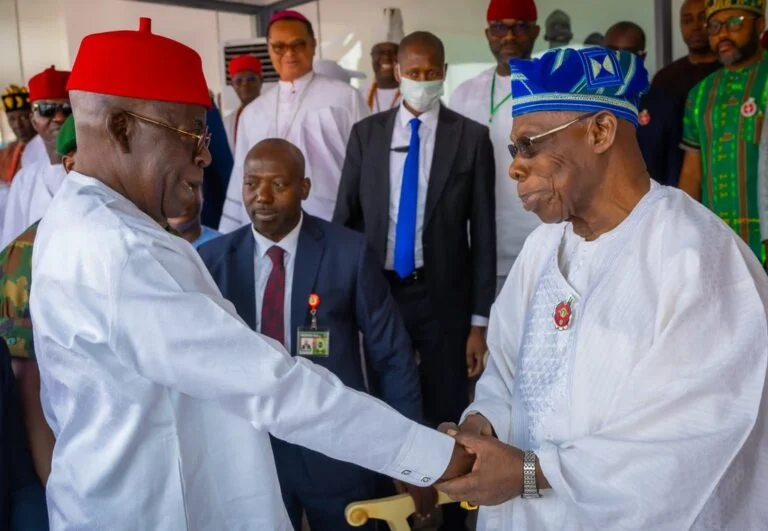

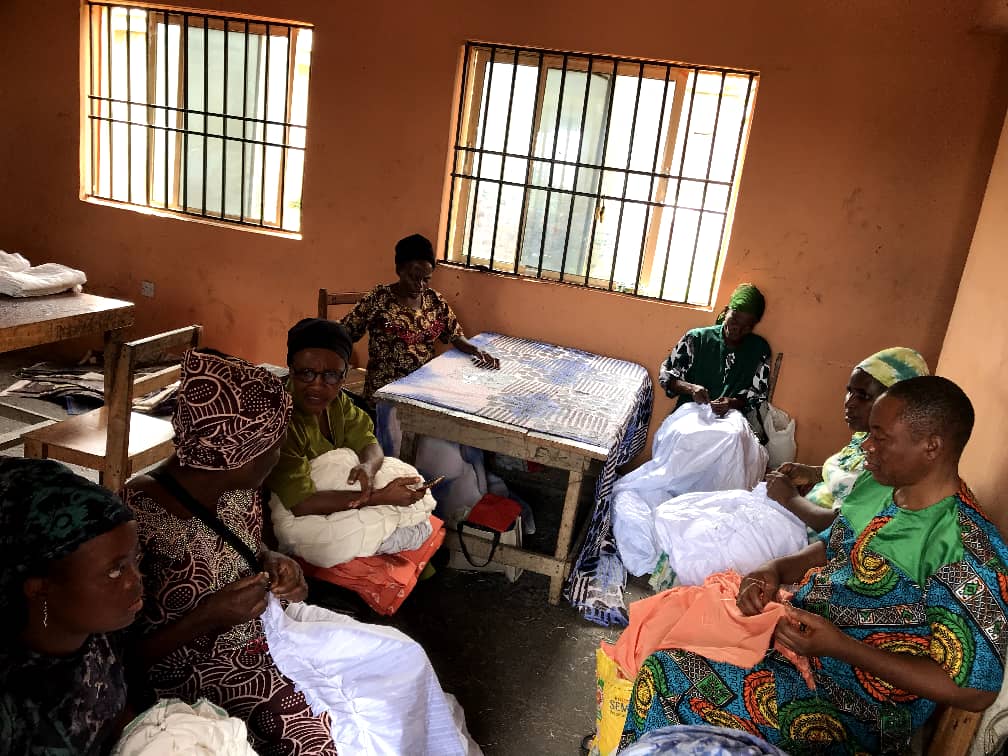
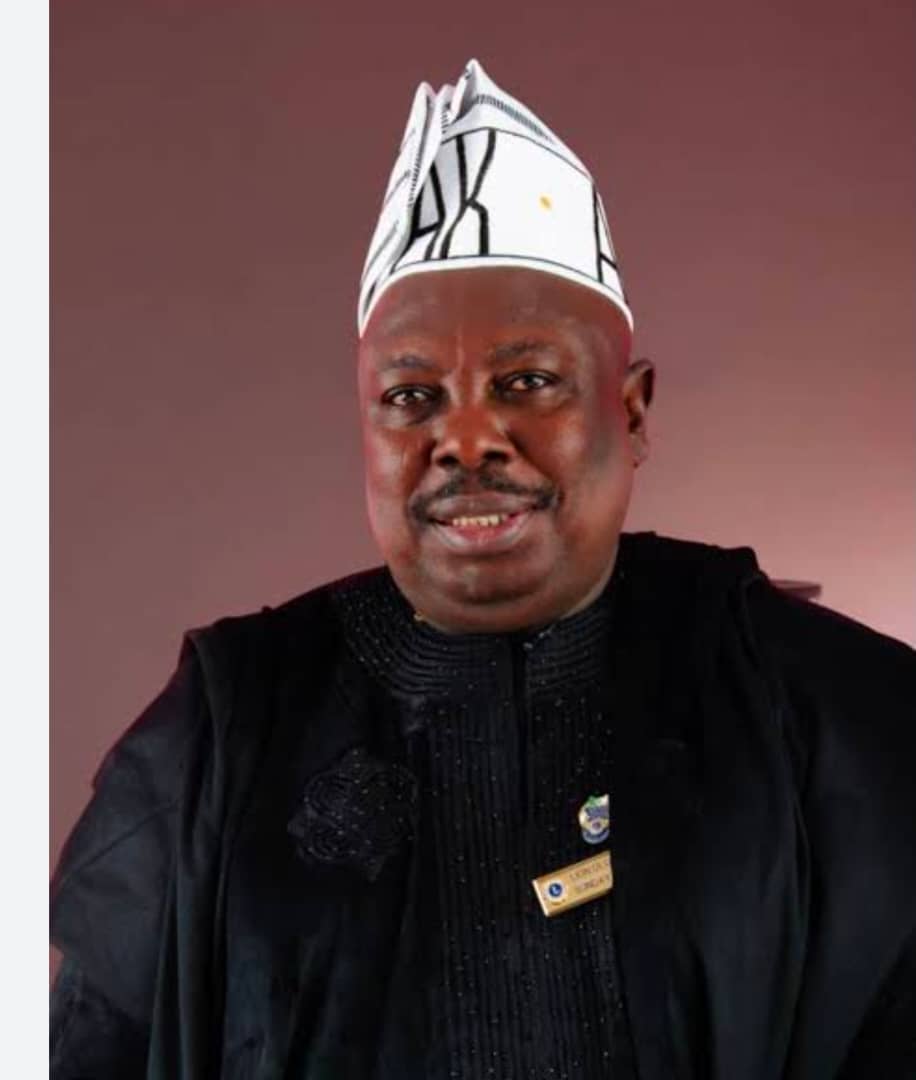
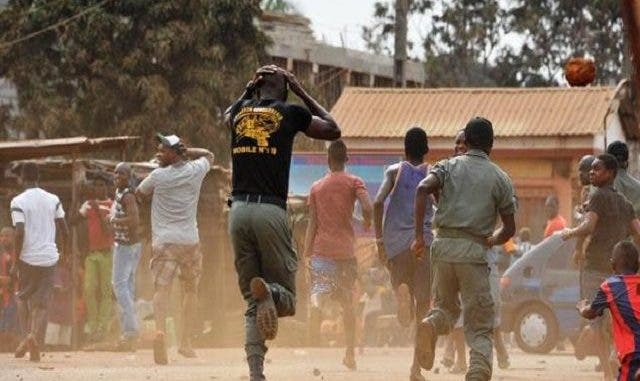
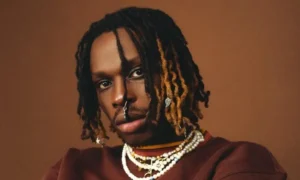
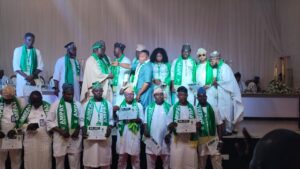
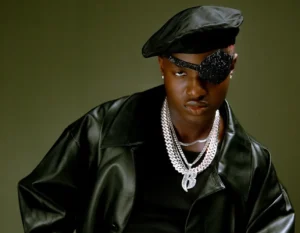

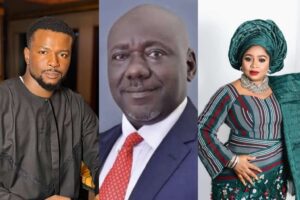



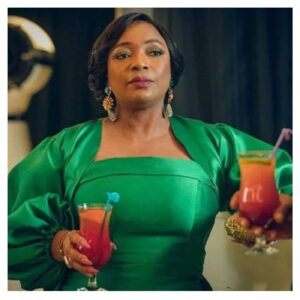

Post Comment